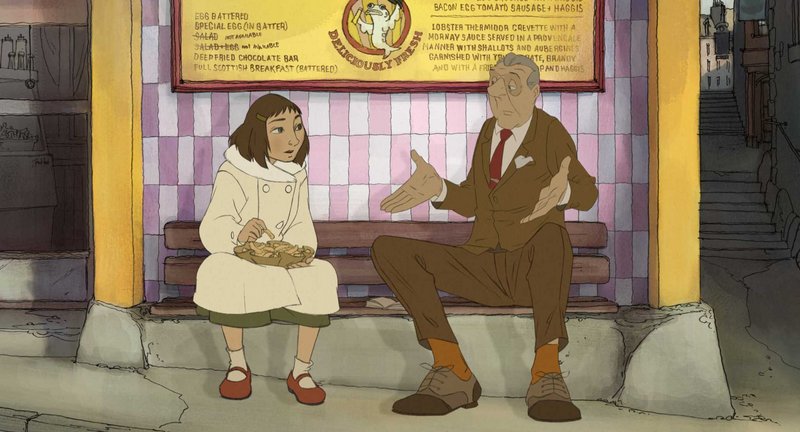With the increasing dominance of 3-D animation and CGI technology, “The Illusionist” feels like a novelty in its embrace of all things old-fashioned. And given its acclaim on the festival circuit along with Golden Globe and Oscar nominations for best animated feature, it seems there’s a market for nostalgia.
The animation reflects the movie’s 1959 setting with an aesthetic that’s more “Lady and the Tramp” than “Up,” and the story follows the last of a dying breed: an itinerant magician, whose career prospects look bleak as entertainment tastes turn from vaudeville toward mop-haired singing Brits. To make matters worse, although he can very ably pull a coin out of a child’s ear, his act feels haphazard, all breaking glass and runaway rabbits.
When he travels to Scotland in search of work, the performer meets a young girl who becomes enthralled with him, convinced his magic is real. After the magician buys the girl a pair of new red shoes to replace her dilapidated boots (and presents them in a most fanciful way), he finds himself with a travel companion and a daughter of sorts.
Film buffs will find the genesis of the script noteworthy; it was written by the late French mime, director and actor Jacques Tati. He might be best known as the pipe-smoking, trenchcoat-bedecked Monsieur Hulot, whose absurd adventures are chronicled in “Playtime” and “Mon Oncle,” among other films from the 1950s and ’60s.
That character served as the template for the aging illusionist. A bit of a galoot, he has Hulot’s same pear shape, high-water pants and distinctively sloppy gait. And much like Tati’s films, “The Illusionist” is almost completely devoid of dialogue. The characters communicate through muffled grunts and makeshift sign language. It could all end up confusing or slow if it weren’t for director and adapter Sylvain Chomet, who has some experience in this realm. His wonderful “The Triplets of Belleville” was also short on talk but long on evocative atmospherics.
Tati completed the bittersweet script in 1959 as a dedication to his daughter (although some controversy persists over which daughter), but he never did anything with it. Tati worked hard to concoct his clueless goofball persona, and maybe he felt that showing his serious side would have been like pulling back the curtain.
That’s not to say the film is a total downer. Whimsical touches abound, including an ornery pet bunny, a fun-loving Scotsman who walks up hills just to roll down and a trio of acrobats who travel by hopping to a chorus of “hep, hep, hep.” The film feels most enchanting when these kinds of moments pop up, although they get less frequent as the little girl grows up and the story gets more serious.
As anyone who has ever sung along to “Puff the Magic Dragon” knows, the charade won’t last forever, and so a sense of melancholy casts a pall over even the comical scenes. For example, the proverbial sad clown shows up in the form of a suicidal mime who listens to peppy circus music on his record player while drinking straight from the bottle.
It’s enough to make you laugh if you didn’t feel like crying.
Send questions/comments to the editors.



Success. Please wait for the page to reload. If the page does not reload within 5 seconds, please refresh the page.
Enter your email and password to access comments.
Hi, to comment on stories you must . This profile is in addition to your subscription and website login.
Already have a commenting profile? .
Invalid username/password.
Please check your email to confirm and complete your registration.
Only subscribers are eligible to post comments. Please subscribe or login first for digital access. Here’s why.
Use the form below to reset your password. When you've submitted your account email, we will send an email with a reset code.